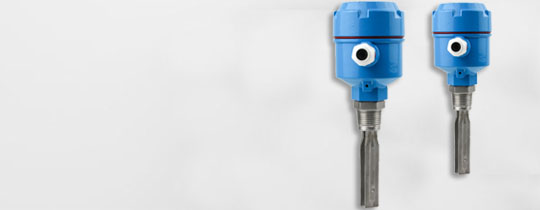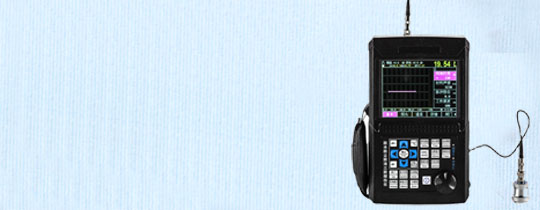
300 degree high temperature resistance proximity switch XNFY50-M18-EW7
The method of detecting impedance changes caused by eddy currents generated by the metal body of the detection coil by generating an AC magnetic field in the detection coil of the XNFY50-M18-EW7 proximity switch that can withstand high temperatures up to 300 degrees.
- XNFY50-M18-EW7
- ZHUOXIN
- 24v-110v-220v-380v
- IP65
- TT, Paypal, Credit card, Western union
- +86-15163766288
- The method of detecting impedance changes caused by eddy currents generated by the metal body of the detection coil by generating an AC magnetic field in the detection coil of the XNFY50-M18-EW7 proximity switch that can withstand high temperatures up to 300 degrees.
Description

Introduction to XNFY50-M18-EW7 High Temperature Proximity Switch: High temperature proximity switch refers to a type of proximity switch that can operate at high temperatures. A switch that uses displacement sensors to control the on or off of a switch based on its proximity characteristics to an object is called a proximity switch. Working principle: The vibrating coil behind the induction surface of the switch generates an alternating electromagnetic field. Any conductive material entering this magnetic field will absorb the current from the oscillating circuit and generate eddy currents. Then, the attenuation of the oscillator is converted into a switching signal in the output amplifier. Based on this functional principle, all metals can be detected, regardless of whether they are moving or not. The high-temperature induction switch is not affected by the operating environment of the sensor due to the high-frequency magnetic field being unaffected by temperature and the magnetic properties inside the detected object. 300 degree high temperature resistance proximity switch XNFY50-M18-EW7 Technical parameters: 1. Body material: A B.S2、 Filler: Epoxy3, Power: 10W4, Switching Voltage: 100 VDC5, Switching Current: 0.5A6, Collapse Voltage: 220 VDC7, Load Current: 1.0A8, Grounding Resistance: 100 m& Omega;9、 Insulation resistance: 108& Omega;10、 Release time: 0.1 ms Max11, induction time: 0.4 ms Max Wiring: 1. Two wire system Two wire system Wiring is particularly simple, connect the proximity switch and load in series, then connect the power supply, use a matching detection object material to approach the proximity switch, and the proximity switch will act. 2. The three wire lead has color markings for proximity switches. The three wire lead has color markings, including the color of the positive wire of the power supply (red or brown), the color of the 0V wire of the power supply (blue), and the color of the signal wire (yellow or black). The three-wire wiring of proximity switches is different because there are two types of three-wire wiring: PNP and NPN. If it is an NPN type proximity switch wiring, locate the proximity switch signal wire, connect the load, and then connect the load to the positive pole wire of the proximity switch power supply. If it is a PNP type proximity switch, also find the signal line of the proximity switch, connect the load, and then connect the load to the 0V line of the proximity switch power supply. Structural form: Proximity switches can be divided into cylindrical, square, groove, perforated (through), and separated types according to their external shape. The cylindrical type is more convenient to install, but its detection characteristics are the same. The detection position of the groove type is on the inner side of the groove, used to detect objects passing through the groove. The through type is rare in China, while it is more commonly used in Japan. It can be used to assemble small parts such as small screws or balls and buoys into water level detection devices. Related precautions: 1. It is strictly prohibited to wire when the power is turned on, and the wiring should strictly follow the color markings on the wiring diagram. 2. The distance between the sensing surface of the switch and the measured body should be within 80% of the rated operating distance to ensure reliable operation of the switch. 3. Proximity switches are generally not suitable for series or parallel use. If necessary, it is recommended to use intermediate relays in series or parallel to drive the load. 4. The DC type switch bixu uses a DC stabilized power supply with a voltage ripple of less than 10] (vpp).
5. Binary switches (whether DC or AC) should be connected to the power supply after passing through the load, otherwise the switch will be damaged. 6. The working voltage of the high-temperature proximity switch is not allowed to exceed its specified value. Application: High temperature proximity switches, due to their ability to withstand high temperatures, are suitable for certain demanding situations and are widely used in industries such as metallurgy, machinery, mining, power, railways, textiles, papermaking, chemicals, plastics, etc. Typical applications: 1. Cement: rotary kiln head/grate cooler working condition monitoring 2. Power plant: boiler and waste heat boiler combustion monitoring 3. Glass: glass melting furnace working condition monitoring 4. Metallurgy: blast furnace/heating furnace working condition monitoring 5. Petrochemical: various tubular heating furnace working condition monitoring 6. Garbage treatment: burner and incinerator working condition monitoring Some products of Zhuoxin Company: JJKGEH15-G30-A2 proximity switch thread installation& nbsp; Cylinder limit switch AL-49R&
Proximity switch LJA71M-3010PT-G for sand mixer< DT-CPS cable float level controller& Belt anti tearing device model HRSLJL800-5QZJK-15Z-2K proximity switch CD10-36V two wire normally open

5. Binary switches (whether DC or AC) should be connected to the power supply after passing through the load, otherwise the switch will be damaged. 6. The working voltage of the high-temperature proximity switch is not allowed to exceed its specified value. Application: High temperature proximity switches, due to their ability to withstand high temperatures, are suitable for certain demanding situations and are widely used in industries such as metallurgy, machinery, mining, power, railways, textiles, papermaking, chemicals, plastics, etc. Typical applications: 1. Cement: rotary kiln head/grate cooler working condition monitoring 2. Power plant: boiler and waste heat boiler combustion monitoring 3. Glass: glass melting furnace working condition monitoring 4. Metallurgy: blast furnace/heating furnace working condition monitoring 5. Petrochemical: various tubular heating furnace working condition monitoring 6. Garbage treatment: burner and incinerator working condition monitoring Some products of Zhuoxin Company: JJKGEH15-G30-A2 proximity switch thread installation& nbsp; Cylinder limit switch AL-49R&
Proximity switch LJA71M-3010PT-G for sand mixer< DT-CPS cable float level controller& Belt anti tearing device model HRSLJL800-5QZJK-15Z-2K proximity switch CD10-36V two wire normally open

Tags
Get the latest price? We'll respond as soon as possible(within 12 hours)

















